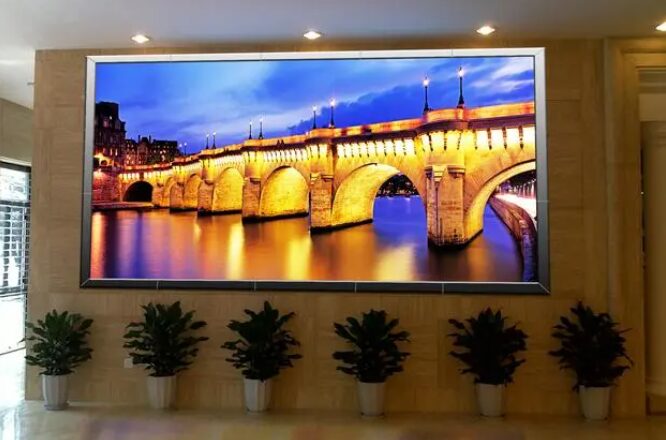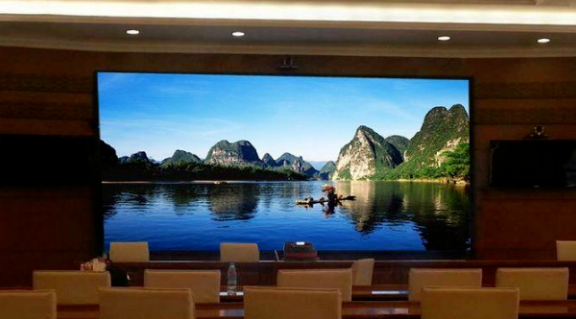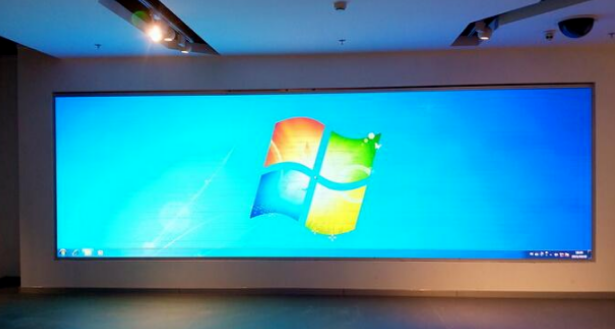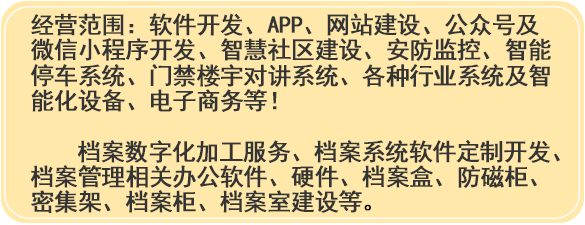Click the blue text

Follow us
Classification of LED Displays
01 Classification Based on Application Location
According to different application locations, LED displays can be divided intoindoor and outdoor:
Indoor screens are mainly used indoors. The production process first involves making the luminous particles into dot matrix modules (or digital tubes), which are then spliced into display unit boards of certain sizes. Based on user requirements, these unit boards are spliced together to form the required dimensions.
Outdoor screens are mainly used outdoors. The production process first involves encapsulating luminous particles into individual light-emitting diodes, referred to as single lamps. The single lamps used for outdoor screens typically employ reflective cups to enhance brightness. Multiple LED single lamps are then encapsulated into a pixel tube or pixel module, which forms a dot matrix display unit box. Based on user needs and display application locations, a display unit box serves as the basic unit to assemble the required dimensions. The box should be designed to be sealed to achieve waterproof and fog-proof purposes, making it suitable for outdoor environments.

02 Classification Based on Primary Color
According to the color of the LED used, LED displays can be divided intosingle color, dual color, and full color:
Single color: Each pixel point has only one color, mostly red, because red has a higher luminous efficiency, allowing for greater brightness. It can also be green or a mix of red, green, and yellow.
Dual color: Each pixel point has red and green as the two primary colors, which can combine to create yellow. With gray control, by varying the red and green gray levels, up to 65,535 colors can be generated.
Full color, also known as three primary colors: Each pixel point has red, green, and blue as the three primary colors. With gray control, by varying the gray levels of red, green, and blue, it can accurately reproduce natural colors, combining to form 16,777,216 colors.

03 Classification Based on Function
Based on the functions of the screen, LED displays can be divided intosynchronous and asynchronous screens:
Asynchronous screens: These displays are mainly used to show text and graphics, including dynamic GIF animations. They communicate with computers to input information. The advantage of asynchronous screens is that they have a rich variety of fonts and can display graphics. The greatest advantage compared to synchronous screens is that they do not require a long-term connection to a computer and can display offline (the computer can be disconnected or taken away after uploading data).
Synchronous screens: These displays have a one-to-one mapping relationship between the screen pixels and the computer monitor pixels, with gray control, so their expressiveness is extremely rich. Equipped with multimedia cards, they can also play video signals. Synchronous screens have good openness and can reflect the computer monitor display in real-time.

04 Classification Based on Technology
Based on the technology of the screen unit boards, LED displays can be divided intothrough-hole lamp unit boards, module unit boards, and surface-mounted unit boards:
Through-hole lamp unit boards are generally used outdoors, characterized by high brightness and good light-gathering effects. The downside is that achieving high density is difficult (in fact, high density is not needed outdoors). The arrangement of colored screen lamp beads can be done in a three-in-one or three-way combination.
Module unit boards are generally used indoors, characterized by good light dispersion, full text display, high density, and short viewing distances. Early types were mainly single and dual color screens.
Surface-mounted unit boards use the latest technology, characterized by ultra-high density. Early colored templates were three-in-one, while the latest technology is three-in-one.
05 Classification Based on Communication Method
Classifying based on communication methods mainly refers to offline display screens, which can be divided intoserial communication, USB communication, and network communication:
Serial communication was the early communication method for displays, which is now gradually being phased out. Its characteristics include slow transmission speed, complex communication line production, and lack of hot-swapping support.
USB communication is generally used for smaller single and dual color LED displays, characterized by convenient communication.
Network communication can be used for all displays, characterized by fast transmission speed and long transmission distance.
Source: LED Display Technology Support
Previous selections:
How to Choose Outdoor Displays? You will know after reading this!
Confidential Archive Room Construction Requirements
Want to know more information? Follow us!
Feel free to call or leave a message!

Phone: 0854-2779389
Mobile:18685093999
Address: Yongyang Street Office, Weng’an County

Scan the QR code | Follow us
WeChat ID | wa-0854
Long press to follow

Those who click to see will have their wishes fulfilled!